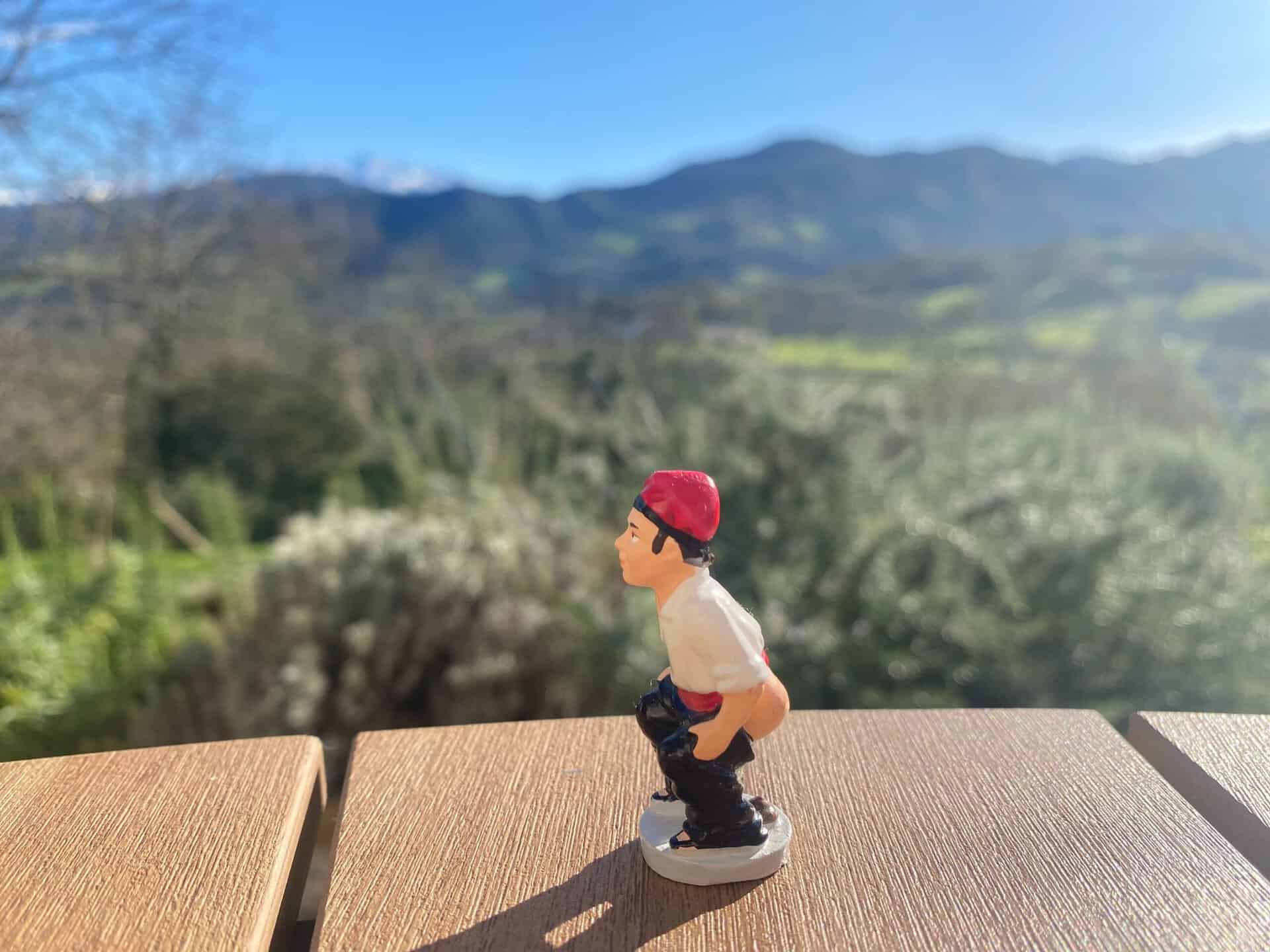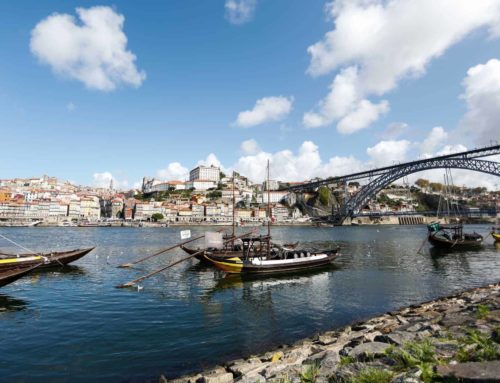At Christmas all over Spain, Italy, Portugal and southern France, we see examples of the Belén (literally meaning Bethlehem) which is rather like our Nativity scene but on steroids. How elaborate you make your Belén is a matter of pride in homes, villages and cities. People spend a considerable amount of money on the figurines, of which there are as many as you could possibly desire.
Of course, you’ll find the typical ones: Mary, Joseph, baby Jesus, the shepherds with a donkey and some sheep plus, the Three Wise Men. But from here onwards, the world is your oyster as the Belén represents many different scenes. It can hold anything from 12-500 figurines. Spain has fifteen companies dedicated to making the figurines and it’s a serious business. In Madrid alone, there are thousands of Beléns around the city, on display from December 6th until January 7th or sometimes later.
But wait, who is this strange figure hiding behind a tree with the explicit appearance of needing to empty his bowels? And why, oh why would such a figure be found in a Nativity scene? It seems MOST inappropriate and disrespectful.
Meet El Caganer, who is doing exactly what you think he is BUT is seen as neither rude nor offensive. Let’s start with his origins. It is generally agreed that the tradition began during the Baroque period (late 17th/early 18th centuries) in Cataluña. During a cultural and artistic movement, he was first depicted only in drawings on tiles reflecting everyday life. He gradually gained popularity and appeared in Catalán and Aragón Beléns before showing his face (or should I say his rear end?) elsewhere. By the 19th century, he was firmly established as a figurine that played a role in the nativity scene. What’s more, he is widely accepted by the Catholic church. Stories vary, of course, but for the sake of argument, we can accept him this way.
El Caganer is a peasant wearing the traditional Catalan red cap (the barretina), often seen smoking a pipe and having his pants down showing his backside committing the act of defecating. Despite this funny image, he has become a figure of great tradition in Catalán Christmas. His popularity extends to other parts of Spain, but many people are unaware of its history and origin. Moreover, he has a meaning beyond the characteristic representation of the figure itself in the nativity scene.
Buy why, you may ask? What does it mean? Well, El Caganer returns to the earth what comes from it. He fertilizes the earth of the nativity scene with his ‘deposit’, thus, bringing luck and joy for the coming year. He symbolizes prosperity and health and, therefore, great happiness for the Christmas holidays. Whatever you do though, he MUST be placed in the outlying scenery of the Belén. To situate him in the forefront would be seen as terribly bad form.
The male version of El Caganer is the most traditional, but in recent times female versions of this figure can also be found (called La Caganera). There is even the role of El Pixaner (pisser), another figure used to decorate the nativity scene and as a marketing gimmick to increase sales. The female variant of El Caganer was created by Lluís Vidal, an artisan from Barcelona, who created her as the first mini-skirts became high fashion. A feminist in the making!
Due to the rise of the popularity of the character manufacturers now create Caganers as political figures, members of the royal families, celebrities, and professional athletes. These Cageners are now commonly used year-round to bring luck or show disrespect to a sports team, a particular athlete, certain politicians, etc.
Not surprisingly, El Caganer is the favourite nativity figure for many children and teenagers. Due to his representation as a ‘party pooper’, they identify with it if they feel left out or create a ruckus during typical family Christmas celebrations. So it is said, but I suspect they just find it funny because it’s toilet humor. I can see my young teenage -self giggling profusely over such a character, especially in the Nativity scene as it stood pride of place on the mantelpiece. Holy cr#p indeed!
Merry Christmas to you all your pilgrims and may you have boundless prosperity and health in the coming year.







Leave A Comment